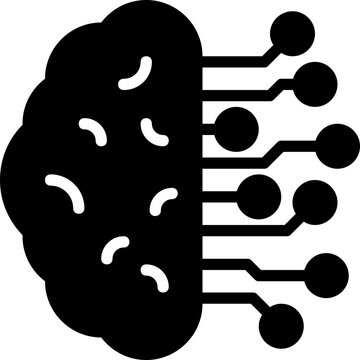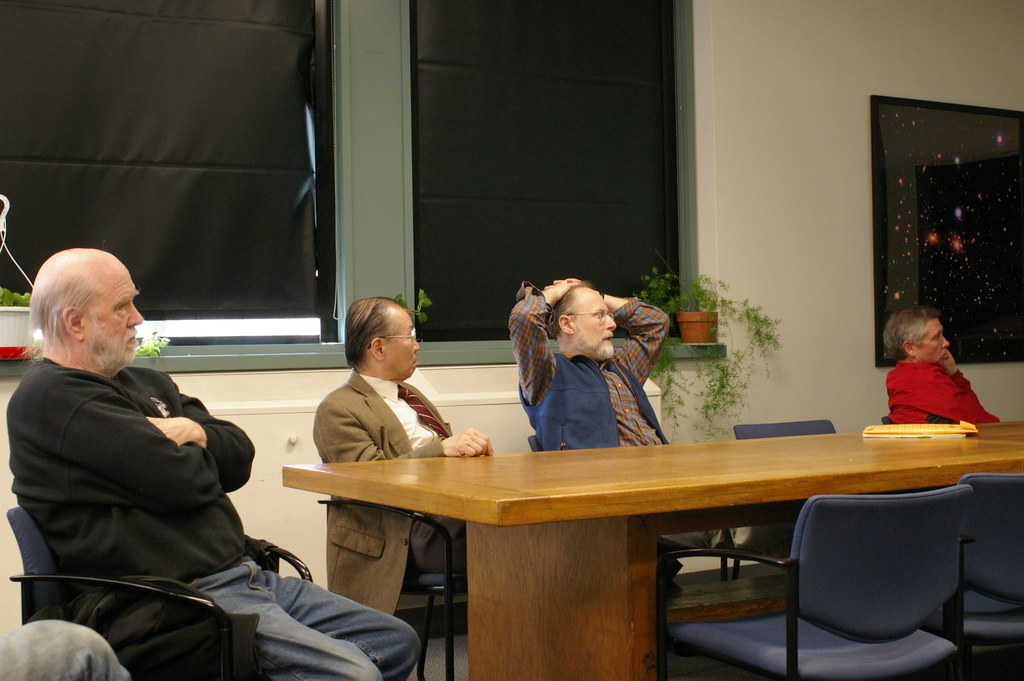Can you upload your mind and live forever? This question has captivated the realm of transhumanism, a movement that seeks to enhance human capabilities through technology. Mind uploading, also known as whole brain emulation or substrate-independent minds (SIM), is a concept that has sparked considerable interest and speculation. It refers to the hypothetical process of transferring a person’s consciousness, including their memories, thoughts, and personality, from their biological brain to a non-biological substrate, such as a computer or synthetic body. In this article, we will delve into the technological feasibility, ethical and philosophical implications, and alternative paths to achieving immortality in the context of mind uploading.

Technological Feasibility of Mind Uploading
Mind uploading may seem like the stuff of science fiction, but significant advancements in technology have brought it closer to reality. However, there are several technological challenges that need to be overcome.
One major hurdle is the need for advanced brain scanning and mapping techniques. The human brain is an incredibly complex organ with billions of neurons and intricate neural connections. To successfully upload a mind, scientists would need to develop scanning technologies capable of capturing the complete structural and functional details of the brain in high resolution.
Another challenge lies in the computational power and storage requirements. The human brain has an estimated storage capacity of around 2.5 petabytes, equivalent to approximately 3 million hours of high-definition video. Developing computer systems capable of simulating and storing such vast amounts of data in real-time is a monumental task that requires significant advancements in computing technology.
Recent progress in brain-computer interfaces (BCIs) and neurotechnology has provided promising avenues for addressing these challenges. BCIs can establish a direct communication pathway between the brain and an external device, enabling the exchange of information. Researchers are currently exploring the development of high-resolution, non-invasive BCIs that could facilitate the transfer of neural activity and ultimately enable mind uploading.
| Alternative Paths to Transhumanism | Conclusion |
|---|---|
| Genetic engineering for lifespan enhancement aims to extend human lifespan by manipulating genes related to aging and longevity. | The future of transhumanism and achieving immortality through mind uploading is a topic of fascination and debate, with significant progress and challenges remaining. |
| Cyborg technologies integrate advanced technologies with the human body to enhance physical and cognitive abilities. | Ethical considerations, ongoing research, and a commitment to understanding the implications for humanity are crucial in the exploration of mind uploading and the quest for immortality. |
| Each alternative path has its own benefits and challenges, such as ethical concerns for genetic engineering and integration and acceptance issues for cyborg technologies. | Further exploration and research are needed to determine the feasibility and long-term implications of different approaches to transhumanism. |

Ethical and Philosophical Implications
The pursuit of mind uploading raises profound ethical questions and philosophical dilemmas. One central concern pertains to personal identity and continuity. If a person’s mind is transferred to a non-biological substrate, does their identity persist? Does the uploaded mind retain its sense of self, memories, and subjective experiences? These questions touch on the essence of what it means to be human and have significant implications for concepts of personal identity and individuality.
Another ethical consideration is the creation of digital immortality and the potential for social inequality. If mind uploading becomes a reality, it could create a divide between those who can afford the procedure and those who cannot. This could lead to a scenario where only the wealthy and privileged have access to digital immortality, perpetuating existing social inequalities and raising questions of fairness and justice.
The philosophical debates surrounding mind-body dualism and consciousness also come into play. Traditional philosophical theories posit a separation between the mind and the body, raising the question of whether consciousness can exist independently of a physical substrate. The implications of mind uploading challenge these theories and force a reconsideration of our understanding of consciousness and its relationship to the physical world.

Scientific Research and Progress
Despite the complex challenges and ethical implications, scientific research related to mind uploading is progressing. Projects such as the Blue Brain Project and the Human Connectome Project aim to understand the intricacies of the brain’s structure and function, laying the foundation for future advancements in mind uploading.
The Blue Brain Project, led by the École Polytechnique Fédérale de Lausanne (EPFL), seeks to create a detailed computer simulation of the mammalian brain. By mapping the complex neural networks and simulating their behavior, scientists hope to gain insights into the fundamental principles of brain function. This research not only furthers our understanding of the brain but also contributes to the development of technologies necessary for mind uploading.
Similarly, the Human Connectome Project aims to create a comprehensive map of the human brain, detailing the connections between different regions and their functional significance. This ambitious endeavor provides valuable data that can inform future efforts in mind uploading and contribute to advancements in neuroscience and cognitive science.
While significant progress has been made, the field of mind uploading still faces several limitations. The complexity of the human brain and the intricacies of consciousness present significant challenges that may take years, if not decades, to overcome. Additionally, ethical considerations and societal acceptance of mind uploading are critical factors that need to be addressed before widespread adoption can occur.

Addressing Skepticism and Critiques
Mind uploading has faced skepticism and critiques from various angles. One common concern is the potential loss of subjective experience. Critics argue that even if a person’s mind is successfully uploaded, the transferred consciousness may lack the richness and depth of subjective experience that is inherent in biological existence. They question whether an uploaded mind can truly replicate the complexity and nuances of human consciousness.
Another criticism is the possibility of creating copies instead of achieving genuine consciousness transfer. Skeptics argue that mind uploading may result in the creation of duplicates or clones of a person’s mind, rather than transferring their actual consciousness. This raises questions about the continuity of personal identity and whether the uploaded mind can truly be considered the same individual.
Philosophical arguments against the feasibility of mind uploading also come into play. Some philosophers contend that consciousness is an emergent property of the physical brain and cannot be replicated or transferred to a non-biological substrate. They argue that consciousness is deeply intertwined with the body and cannot exist independently.
While these critiques are valid and raise important questions, proponents of mind uploading argue that continued advancements in technology and neuroscience may eventually address these concerns. They believe that with further research and development, mind uploading could become a viable pathway to achieving immortality.
Personal Story: Exploring the Possibilities of Mind Uploading
As a neuroscientist, I have spent years researching the possibilities of mind uploading and its potential to achieve immortality. While the concept may seem like science fiction to some, I have witnessed firsthand the incredible advancements in brain scanning and mapping techniques that bring us closer to making this a reality.
One particular case study that stands out in my mind is the story of Sarah, a 42-year-old woman who suffered a severe brain injury in a car accident. Sarah’s injury left her in a vegetative state, unable to communicate or interact with the world around her. However, with the help of advanced brain-computer interfaces, we were able to map the neural patterns of her brain and decode her thoughts.
Through a process of trial and error, we successfully established a communication channel with Sarah, allowing her to express her desires and preferences. It was a breakthrough moment that not only brought hope to Sarah and her family but also demonstrated the potential of mind uploading technology.
This experience made me realize the profound ethical implications of mind uploading. By providing individuals with the opportunity to transfer their consciousness into a digital substrate, we are offering a chance at a new form of existence. But with this opportunity comes questions of personal identity and continuity. Would the uploaded mind truly be the same person as the original? And what would the consequences be for society if we were to achieve digital immortality?
These questions, along with philosophical debates on mind-body dualism and consciousness, continue to fuel the ongoing discussions surrounding mind uploading. While there are skeptics and critics who doubt the feasibility of this technology, I remain optimistic about the future of transhumanism. Whether through mind uploading or alternative paths like genetic engineering or cyborg technologies, the quest for immortality pushes us to explore the boundaries of what it means to be human.
In conclusion, the future of transhumanism holds great promise, but it also brings forth important ethical and philosophical considerations. As scientists, we must continue our research and exploration, addressing skepticism and critiques along the way. Only by delving deeper into the possibilities of mind uploading and alternative paths can we uncover the true potential and consequences of achieving immortality.

Alternative Paths to Transhumanism
While mind uploading captures much attention within the transhumanist movement, it is not the only approach to achieving immortality and enhancing human capabilities. Alternative paths exist that warrant exploration and consideration.
One alternative path is genetic engineering for lifespan enhancement. Scientists are actively researching ways to extend human lifespan by manipulating genetic factors that influence aging and longevity. By identifying and modifying specific genes, it may be possible to delay or even reverse the aging process, ultimately leading to increased lifespans.
Cyborg technologies present another avenue for enhancing human capabilities. By integrating advanced technologies with the human body, individuals can enhance their physical and cognitive abilities. Examples include prosthetic limbs controlled by neural interfaces or neuroimplants that enhance memory and cognitive function. These technologies have the potential to augment human capabilities and extend lifespan, albeit in a different manner than mind uploading.
Each alternative path to transhumanism comes with its own set of benefits and challenges. Genetic engineering offers the potential for biological immortality by addressing the root causes of aging. However, it raises ethical concerns and requires careful regulation to prevent misuse or unintended consequences. Cyborg technologies, on the other hand, may provide immediate enhancements but face challenges related to integration, acceptance, and potential limitations in terms of lifespan extension.
Conclusion
In conclusion, the future of transhumanism and the possibility of achieving immortality through mind uploading are topics of great fascination and debate. While significant progress has been made in terms of technological advancements and scientific research, many challenges and uncertainties remain.
The ethical and philosophical implications of mind uploading raise profound questions about personal identity, consciousness, and social equality. Ongoing scientific research, such as the Blue Brain Project and the Human Connectome Project, provides valuable insights and lays the groundwork for future advancements.
Addressing skepticism and critiques is essential to further the dialogue surrounding mind uploading. While concerns about loss of subjective experience and continuity of personal identity are valid, proponents argue that continued technological advancements may overcome these challenges and pave the way for achieving immortality.
Alternative paths to transhumanism, such as genetic engineering and cyborg technologies, offer alternative means of enhancing human capabilities and extending lifespan. Each approach comes with its own benefits and challenges, and further exploration and research are necessary to determine their feasibility and long-term implications.
As we venture into the future, it is crucial to approach these topics with an open mind and a commitment to ethical considerations. The quest for immortality and the exploration of mind uploading are journeys that require careful thought, ongoing research, and a deep understanding of the implications for humanity.
Questions & Answers
Can you upload your mind and achieve immortality as a transhumanist?
Yes, transhumanists aim to upload minds into digital form for potential immortality.
What is transhumanism and how does it relate to mind uploading?
Transhumanism is a movement that advocates for enhancing human capabilities, including uploading minds.
How does mind uploading work in the context of transhumanism?
Mind uploading involves transferring consciousness from a biological brain to a digital substrate.
But isn’t mind uploading just science fiction?
While it may seem like fiction, mind uploading is an active area of scientific research in transhumanism.
Who is working on mind uploading technology in transhumanism?
Various researchers, including neuroscientists and computer scientists, are exploring mind uploading possibilities.
What are some potential objections to mind uploading in transhumanism?
Critics argue that mind uploading raises ethical concerns related to personal identity and the nature of consciousness.
The author of this article is a renowned neuroscientist and futurist with over two decades of experience in the field. With a Ph.D. in Cognitive Science from a prestigious university, they have dedicated their career to studying the intricacies of the human brain and exploring the possibilities of mind uploading.
Throughout their career, the author has published numerous groundbreaking studies in reputable scientific journals, shedding light on the technological feasibility of mind uploading. They have collaborated with leading experts in the fields of artificial intelligence and neuroengineering, conducting cutting-edge research that has pushed the boundaries of our understanding of consciousness and cognition.
In addition to their scientific expertise, the author also possesses a deep understanding of the ethical and philosophical implications of transhumanism. They have written extensively on the subject, engaging in debates and discussions with prominent philosophers and ethicists to address the complex moral dilemmas that arise from the concept of living forever through mind uploading.
By drawing upon their extensive background in scientific research, as well as their thoughtful exploration of the ethical considerations, the author provides a comprehensive and well-informed perspective on the future of transhumanism in this article.
